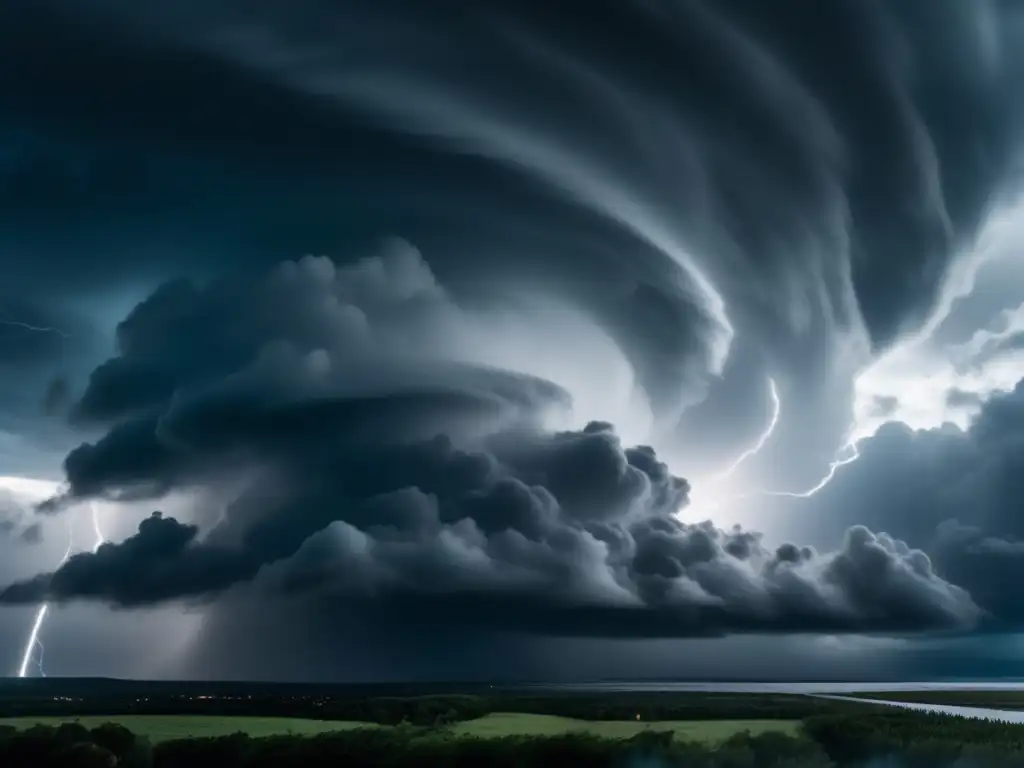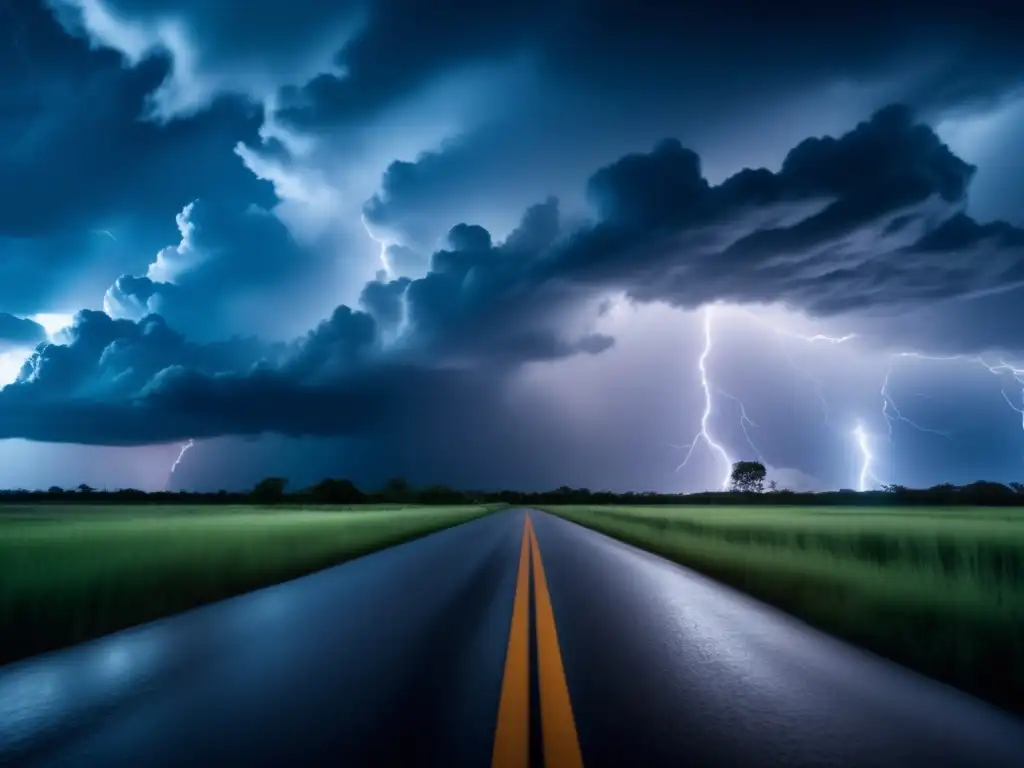Storm Clouds: Understanding The Cloud Formations In Hurricanes

Storm Clouds: Understanding the Cloud Formations in Hurricanes
Introduction
Hurricanes are some of the most dangerous natural disasters that can occur on our planet. They are known for their strong winds, heavy rainfall, and devastating storm surges. Understanding the science of hurricanes is important to be able to prepare for them and mitigate their effects. One aspect of hurricane science that is particularly fascinating is the cloud formations that occur within them. In this article, we will explore the different types of clouds that form in a hurricane and what they indicate about the storm.
Low-Level Clouds in Hurricanes

Cumulus Clouds
Cumulus clouds are low-level clouds that have a fluffy appearance. They often indicate the presence of rising warm air currents. In a hurricane, cumulus clouds can be seen in the outer bands along the edge of the storm. These clouds can be indicators of the potential strength of the storm. As the storm intensifies, these cumulus clouds will grow in size and number.
Stratus Clouds
Stratus clouds are low-level clouds that form a flat, gray layer. They usually indicate stable atmospheric conditions. In a hurricane, stratus clouds can be found in the outermost regions of the storm, away from the eye. They are usually associated with light rain and lower wind speeds.
Trade Wind Inversion Layer
The trade wind inversion layer is a layer of warm, dry air that sits above the cooler, moist air of the lower atmosphere. This layer can be found at around 5,000 to 10,000 feet in altitude. It is particularly important in hurricanes because it can act as a barrier to storm development. When a hurricane encounters a trade wind inversion layer, it can weaken or even dissipate if it cannot overcome the layer's stable conditions.
Middle-Level Clouds in Hurricanes

Altostratus Clouds
Altostratus clouds are middle-level clouds that have a gray or blue-gray appearance. They can indicate the presence of a warm front or the approach of a tropical storm or hurricane. In a hurricane, altostratus clouds can be found in the outer bands along the edge of the storm.
Altocumulus Clouds
Altocumulus clouds are middle-level clouds that have a puffy, white appearance. They can indicate instability in the atmosphere. In a hurricane, altocumulus clouds can be found in the outer banks and in the eye wall. They can be indicators of heavy rainfall and strong winds.
Cirrostratus Clouds
Cirrostratus clouds are high-level clouds that have a thin, wispy appearance. They usually indicate the approach of a warm front or the onset of precipitation within 12 to 24 hours. In a hurricane, cirrostratus clouds can be found near the top of the storm and can be an indicator of the strength of the upper-level winds.
High-Level Clouds in Hurricanes

Cirrus Clouds
Cirrus clouds are high-level clouds that have a feathery, wispy appearance. They can indicate the presence of strong winds in the upper atmosphere. In a hurricane, cirrus clouds can be found above the eye of the storm and can indicate the presence of a strong upper-level wind shear. This shear can weaken the storm by disrupting its circulation.
Cumulonimbus Clouds
Cumulonimbus clouds are towering clouds that can reach heights of up to 70,000 feet. They are often associated with thunderstorms and heavy precipitation. In a hurricane, cumulonimbus clouds can be found in the eye wall and can indicate the presence of intense rainfall and strong winds.
Anvil Clouds
Anvil clouds are the flat tops of cumulonimbus clouds that spread out horizontally. They can indicate the presence of strong upper-level winds that push the top of the cloud away from the storm. In a hurricane, anvil clouds can be found in the outer banks and can be an indicator of the direction and strength of the upper-level winds.
Frequently Asked Questions

-
What is the most important type of cloud to look for in a hurricane?
The most important type of cloud to look for in a hurricane is the cumulonimbus cloud. It is often associated with intense rainfall and strong winds in the eye wall of the storm.
-
What do cirrus clouds in a hurricane indicate?
Cirrus clouds can indicate the presence of strong upper-level wind shear that can weaken the storm by disrupting its circulation.
-
What is the trade wind inversion layer?
The trade wind inversion layer is a layer of warm, dry air that sits above the cooler, moist air of the lower atmosphere. It can act as a barrier to storm development in a hurricane.
-
What do altostratus clouds indicate in a hurricane?
Altostratus clouds can indicate the presence of a warm front or the approach of a tropical storm or hurricane.
-
What do anvil clouds in a hurricane indicate?
Anvil clouds can indicate the direction and strength of the upper-level winds in a hurricane.
Conclusion
Understanding the cloud formations that occur within hurricanes is essential for preparing for and mitigating the effects of these dangerous storms. By knowing what different types of clouds indicate, we can better predict the strength and direction of a storm and make informed decisions about evacuation and other safety measures. As hurricane season approaches, it is important to stay informed and prepared for any potential threats.
Additional Resources

- National Hurricane Center
- The Weather Channel's Hurricane Central
- Ready.gov's Hurricane Preparedness Guide
 How Hurricanes Changed The Course Of History
How Hurricanes Changed The Course Of History The Human Toll: Life And Loss In Hurricane-Stricken Areas
The Human Toll: Life And Loss In Hurricane-Stricken Areas The Factors That Determine A Hurricane's Path
The Factors That Determine A Hurricane's PathIf you want to discover more articles similar to Storm Clouds: Understanding The Cloud Formations In Hurricanes, you can visit the Basic knowledge about hurricanes: category.
Leave a Reply

Articulos relacionados: